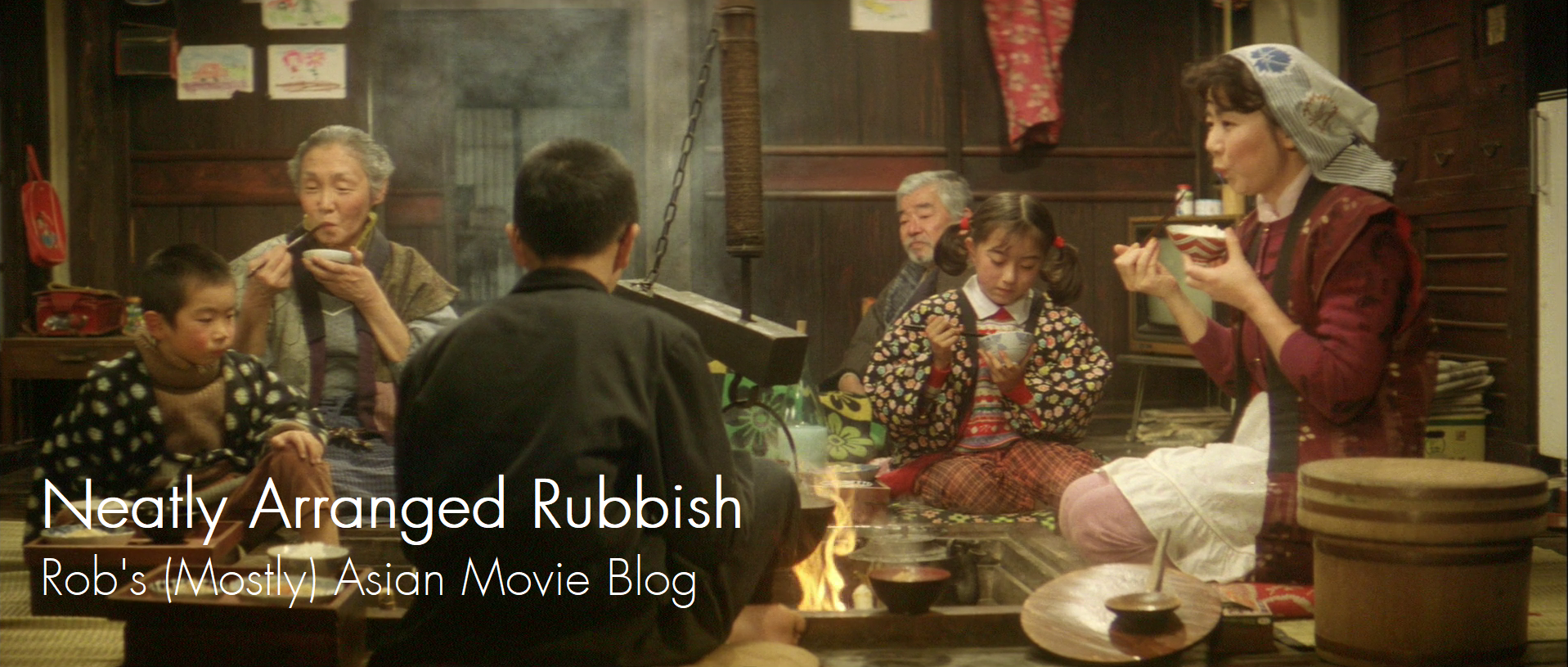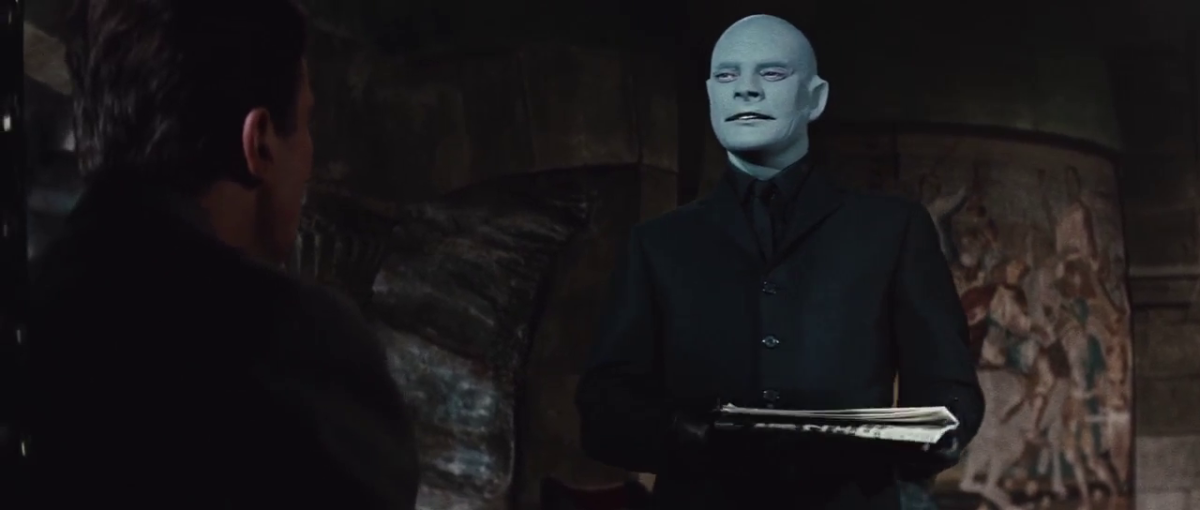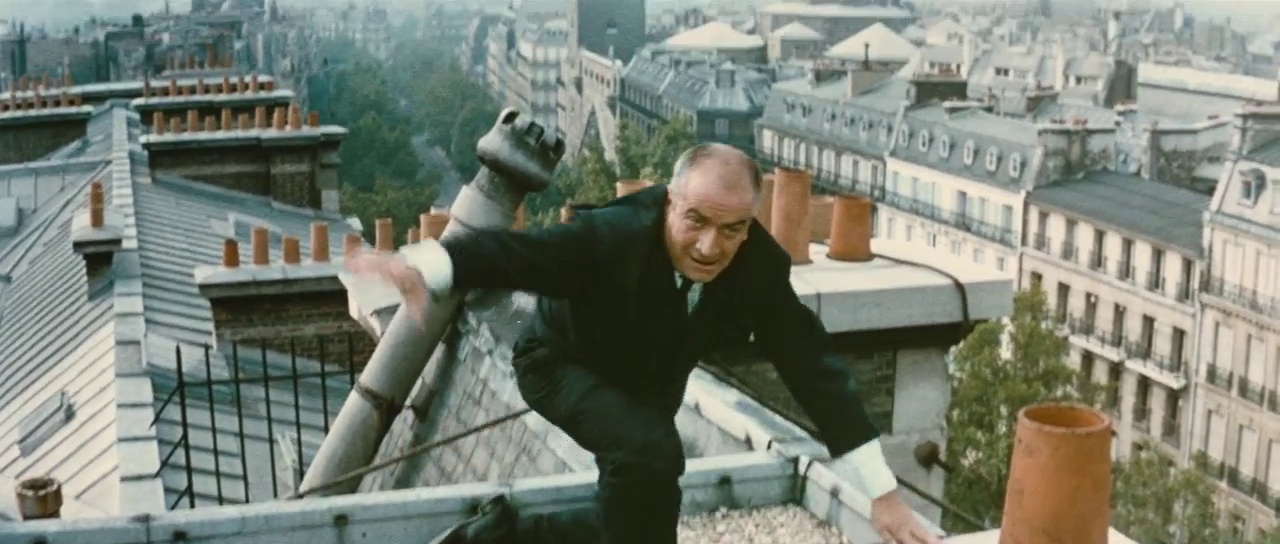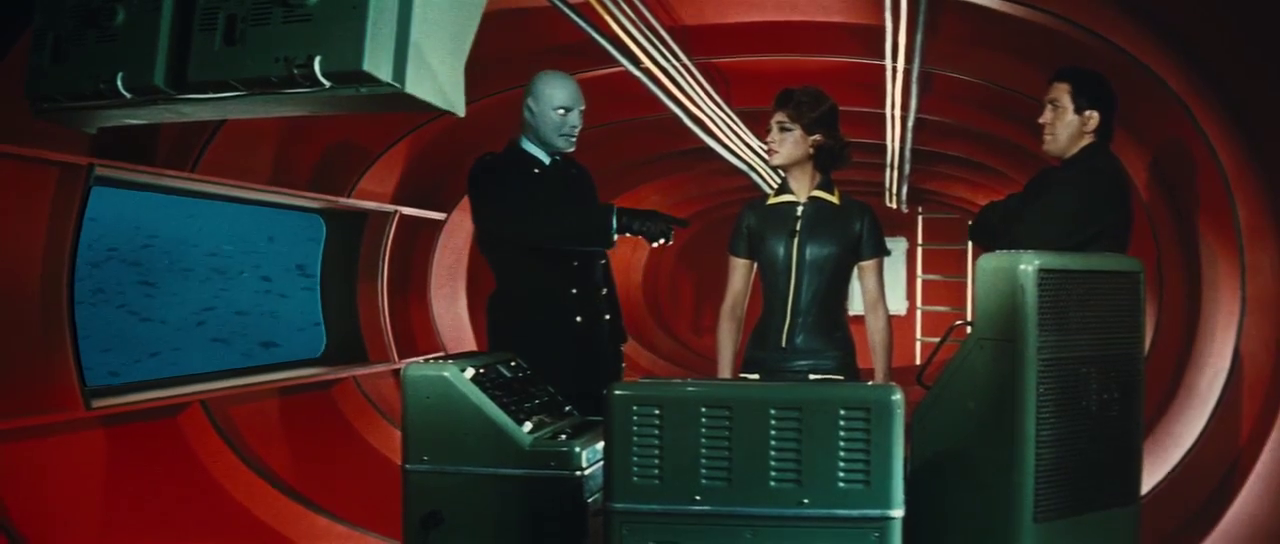Last Updated on September 29, 2020 by rob
In the midst of a reign of terror by the mysterious supervillain Fantomas (Jean Marais), newspaper reporter Fandor (Marais, again) and photographer Helene (Mylene Demongeot) stage a mock interview with the villain that incurs Fantomas’ wrath. Kidnapping Fandor, Fantomas pulls off an audacious jewel robbery disguised as the reporter and then another heist posing as his nemesis, police inspector Juve (Louis de Funes). With both Fandor and Juve framed for robberies they didn’t commit it’s up to both men to prove their innocence in an epic cross country pursuit of the flamboyant Fantomas.
I think this is one of the best fantasy movies of the 1960’s. It’s basically a runaround with an engaging cast, well paced, that doesn’t take itself too seriously but does treat its farcical situations with a straight face so that it doesn’t descend into camp. It reminded me a bit not so much of James Bond but of the colour Diana Rigg episodes of The Avengers. Fantomas himself would have been right at home in that series. He’s a master of disguise thanks to the lifelike masks he creates of his victims (even his true features are always hidden behind a blue one that seems to be his default appearance), he lives in a spacious and sumptuous underground lair and has a beautiful aide in the shape of Marie-Helene Arnaud’s posh Lady Beltham, a woman who seems initially like an unwilling captive of Fantomas but who actually turns out to be even more murderous than him where matters of the heart are concerned.
Fantomas is derived from a popular and long running series of French books dating from 1911. In this screen incarnation the old fashioned qualities of the character such as his aristocratic bearing, the calling cards he always leaves at the scene of his crimes and flamboyant gestures (the wheelie he does when he makes off on a stolen motorbike!) are fused with an array of modern technology at his disposal (helicopters, submarines, a radio controlled crane, a car than can drop an oil slick to deter pursuers) creating a figure with one foot in the past and one in the swinging present. It works very well and like all megalomaniacs Fantomas isn’t without ego. His touchiness at anyone criticising him is a hoot and I loved the scene where a crowd gawping at Inspector Juve on tv sets through a shop window are rudely interrupted by Fantomas’ goons screeching up in a car and lobbing a bomb through the window to blow up all the sets!
Something else I admired about Fantomas is that it doesn’t get bogged down with needless sub-plots (the last act is basically one big chase involving cars, motorbikes, trains and a helicopter) and the characters stay as simple types. Marais’ journalist is mostly defined by his physical attributes; he’s handsomely weathered, broad shouldered, courteous – even when being held prisoner – and more than able to hold his own in a fight. More on that in a moment. And Louis de Funes’ Inspector Juve is very much in the Clouseau mould – a short, stout, bumbling detective who gets everything wrong and keeps making an idiot of himself. He’s the fool to Marais’ straight man and they make a good pairing. One of the funniest scenes for me is when Juve turns up for an identikit of Fantomas being put together by witnesses to the casino robbery only to find that as the villain’s features are stitched together it’s his own face up there on the screen.
But where the two actors really come into their own is in the action scenes. I’m not sure I’ve ever seen a film where two middle-aged actors (when this was made de Funes was 50 and Marais 51) seem to so relish doing their own stunts. Is that really de Funes clambering and sliding over the Parisian rooftops during a chase scene? Or hanging on for dear life when he slips between two open topped freight cars speeding down a railway line? Sure looks like it. And Jean Marais must have been in astonishingly fit condition. A sequence in which he knocks around two of Fantomas’ goons during a brawl has him throwing punches and ducking and diving with little camera cutting to help him. A later sequence in which he dashes across rooftops, climbs onto a crane from its hook and then – get this – steps onto a rope ladder from a helicopter that’s flown in and allows himself to be carried off the crane and up into the bright blue yonder while waving merrily at his erstwhile pursuer, completely blew me away. I mean, just imagine the balls it took to do something like that!
In most every respect Fantomas is a class act. The donning and removing of the rubber masks that enable Fantomas to carry out his villainous schemes are convincingly carried off without seeming corny. Production values are strong without being overpowering. We don’t see too much of Fantomas’ Phantom of the Opera-ish underground lair but what we do see leaves us wanting more. The decision to film so much of the movie on exterior locations means the film retains an air of realism, an edge, that it maybe mightn’t have had if it were entirely studio bound. Also the various locations look great courtesy of Marcel Grignon’s rich, colour cinematography and his work boasts some stunningly fluid aerial shots. One in particular, that takes us up the side of a mountain right the way to the top and a car with Fandor and Helene inside is pretty breathtaking. The many action sequences are exceptionally well designed and directed. Other than a setpiece in which Fandor and Helene are trapped in a speeding car that’s hurtling down a twisty mountain road (first forwards and then backwards!) the film does its utmost to avoid the actors emoting against a rear projection screen in favour of having them right there in the middle of the mayhem.
Obviously stunt doubles are used but many of the shots (such as the aforementioned crane/helicopter scene with Marais) seem deliberately designed to show the audience that it is indeed the actual stars performing the action rather than some lookalike who always keeps his back to the camera and that adds tremendously to the overall impact. I can’t say I’m all that familiar with director Andre Hunebelle’s work but I think I’m going to have to go and watch as much as I can of his stuff because he’s done a superb job with this. Two sequels with the same cast and director quickly followed; Fantomas Unleashed (1965) and Fantomas Against Scotland Yard (1966). And in 1969 Shaw Bros gave the film a stronger female spin with a no doubt unofficial remake in the shape of the fun Temptress Of A Thousand Faces.




